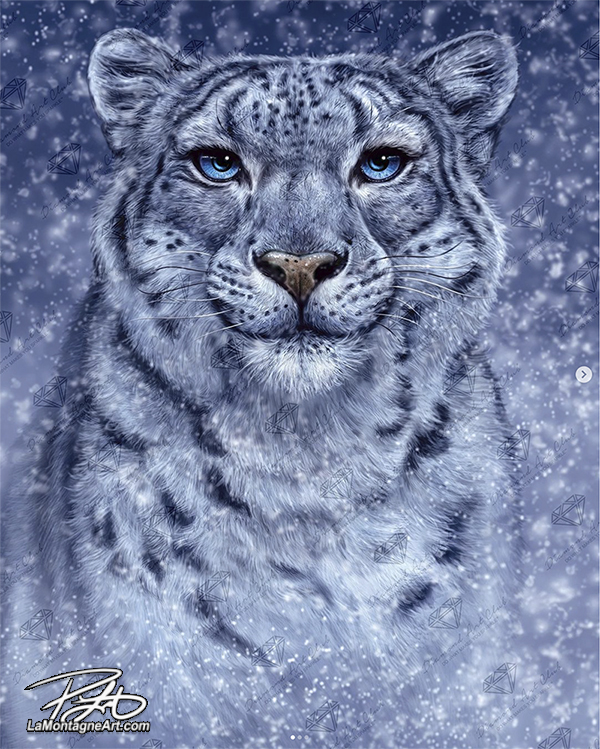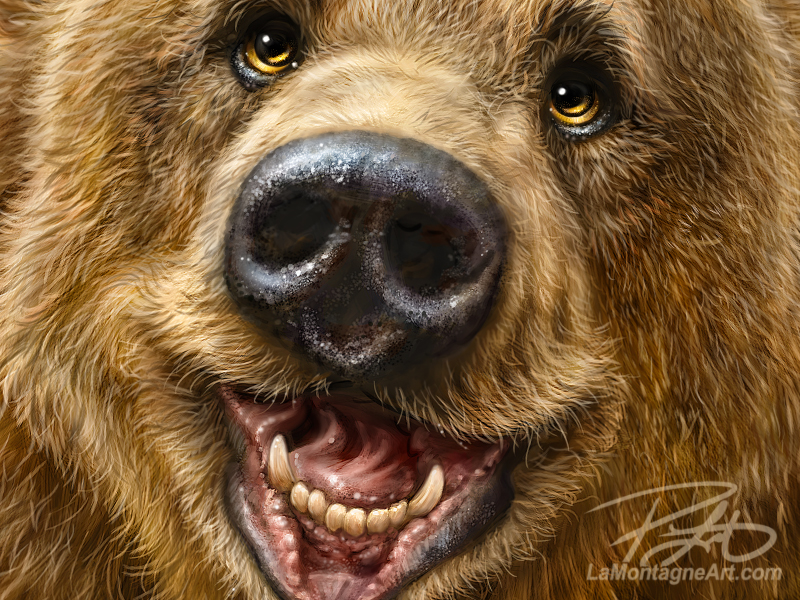
Although I haven’t felt like writing much lately, I figured I should post an update. I’ve been busy working on a couple of paintings, and while I would have liked to have finished one by this week, I couldn’t pass up an opportunity to take a much-needed break.
 My buddy Darrel and I spent five days last week at the cabin we rent in the foothills of central Alberta. Even though our first visit there was in January of 2018, we don’t often go during the winter months.
My buddy Darrel and I spent five days last week at the cabin we rent in the foothills of central Alberta. Even though our first visit there was in January of 2018, we don’t often go during the winter months.
But with an opportunity in both our schedules, we won the gamble that it was available on short notice. You never know what you’ll get in February, but we lucked out with typical pleasant winter temperatures and several comfortable sunny days.
The only animals we saw were several white-tailed deer, though plenty of coyote and rabbit tracks. I had hoped to capture a moose, coyote or owl, but wildlife doesn’t punch a clock.
 Back to work, I’m already preparing for the Calgary Expo at the end of April, figuring out the stock I’ll order and trying to make the most efficient use of my creative time and energy.
Back to work, I’m already preparing for the Calgary Expo at the end of April, figuring out the stock I’ll order and trying to make the most efficient use of my creative time and energy.
Puzzles
While I had planned to do a puzzle pre-order this month, I have changed my mind. I’m sure puzzle enthusiasts put them together all year long, but if there is a season for this hobby, it’s when the weather keeps people inside. When spring rolls around, most people want to spend more time outdoors. I know I do.
Another consideration is that puzzles cost more than other items, especially when one factors in shipping. The state of the economy is no secret, and I know many people are watching their spending right now, including me. I’m thinking carefully about which products to invest in and planning the best time to do so.
With that in mind, it seems like launching the next round of puzzle designs in March would be poor timing for maximum sales. While I did very well with all my other products at the Calgary Expo, I didn’t sell many puzzles. Since I don’t want to end up with a lot of stock sitting on a shelf all summer, I have decided to hold off on new designs until the fall, when I’ll have more opportunities to sell them.
I have two detailed paintings in mind for two of the puzzles, and though I’ve started on both, each is a challenging piece. I don’t want to rush them.
Postcards
Several years ago, I sold postcard sets of my work, which were popular with the Expo crowd for a few years. Then, interest dropped off one year, so I discontinued the product and focused on others. But last year, people began asking for them again.
A knowledgeable friend in retail told me that some products go in cycles, including postcards. I won’t know if that’s true for me unless I try them again. So, I’ll relaunch 4×6 postcards sets at this year’s Calgary Expo at the end of April. If they do well, I’ll continue to stock them for future markets as long as there’s interest.
Prints
Since I had to proof four new paintings recently, and the Calgary Zoo placed their first large order of the year, I figured I might as well begin stocking my Expo prints at the same time. I spent most of Monday afternoon signing and packaging a large order from my Victoria supplier, Art Ink Print.
I still want to finish a few more paintings before the Expo, so I’ll place another large order in the next couple of months. But it’s nice to get an early start.

Several of you will wait to buy new prints until you visit me at my Expo booth, but most won’t have that opportunity. With no real reason to wait, I’m pleased to announce that the first prints of Genial Grizzly, Golden Bear, Meerkat and Raven on White are now available in the online store.
I’ve also restocked TEN prints that had sold out, which makes almost 50 different prints and a dozen stickers now available in the store, so please take a look and see if there’s something in there you like. All prints are 11×14 and should be an easy-to-find frame size, wherever you choose to buy yours.
That’s it for now, and I hope to have a new painting (with a lot of hair!) to share with you very soon.



 In the late nineties, I worked different jobs at a hotel in Banff for five or six years, from waterslide attendant and manager to front desk agent, night auditor and accounting clerk.
In the late nineties, I worked different jobs at a hotel in Banff for five or six years, from waterslide attendant and manager to front desk agent, night auditor and accounting clerk. I’ve always liked ravens, and I talked a bit about that in my
I’ve always liked ravens, and I talked a bit about that in my 

 I’ve also completed the bulk of my year-end bookkeeping this week and cleaned my office so I can start the new year right. I typically don’t make New Year’s resolutions, but I always have plans for the coming year.
I’ve also completed the bulk of my year-end bookkeeping this week and cleaned my office so I can start the new year right. I typically don’t make New Year’s resolutions, but I always have plans for the coming year.
 I’ve taken hundreds of meerkat photos at the
I’ve taken hundreds of meerkat photos at the 
 When it came to meerkats, I’ve long had the idea to paint a whole troop of them, so painting a solitary meerkat wasn’t on the radar, or I’d do the occasional sketch painting, but never a finished production piece. But just like the three giraffes I painted for my
When it came to meerkats, I’ve long had the idea to paint a whole troop of them, so painting a solitary meerkat wasn’t on the radar, or I’d do the occasional sketch painting, but never a finished production piece. But just like the three giraffes I painted for my 




 The first is the bear book. I’ve been actively painting new bears and writing content to accompany them. I finally got sick of my excuses and I’m seeing real progress and positive momentum rather than procrastination.
The first is the bear book. I’ve been actively painting new bears and writing content to accompany them. I finally got sick of my excuses and I’m seeing real progress and positive momentum rather than procrastination. I plan to paint at least a half dozen new images I can shop around exclusively for new clients, and some I’ll only offer as prints for now. All eggs in one basket is a bad idea at the best of times, let alone in this down economy.
I plan to paint at least a half dozen new images I can shop around exclusively for new clients, and some I’ll only offer as prints for now. All eggs in one basket is a bad idea at the best of times, let alone in this down economy. Though the first puzzles did very well, I won’t print those images again, opting for new ones instead. Some will be more involved pieces featuring multiple animals, which means each painting will take more hours to create than one with a single critter.
Though the first puzzles did very well, I won’t print those images again, opting for new ones instead. Some will be more involved pieces featuring multiple animals, which means each painting will take more hours to create than one with a single critter.


 “Snow Queen” by Patrick LaMontagne available in 19.5″ x 25.8″ (49.6cm x 65.5cm) | Square with 28 Colors including 2 ABs and 1 Fairy Dust Diamond
“Snow Queen” by Patrick LaMontagne available in 19.5″ x 25.8″ (49.6cm x 65.5cm) | Square with 28 Colors including 2 ABs and 1 Fairy Dust Diamond

 Trade shows and gift markets share similarities, but each is unique. Many vendors travel from one to the next each season. They know each other as coworkers and are on familiar terms with the organizers in different towns and venues. I always learn a lot from talking with these more experienced vendors, and I haven’t met one yet who wasn’t willing to share helpful information.
Trade shows and gift markets share similarities, but each is unique. Many vendors travel from one to the next each season. They know each other as coworkers and are on familiar terms with the organizers in different towns and venues. I always learn a lot from talking with these more experienced vendors, and I haven’t met one yet who wasn’t willing to share helpful information. You’ll have to forgive the blown-out sections of these photos where my phone camera overcompensated for the low light/spotlights.
You’ll have to forgive the blown-out sections of these photos where my phone camera overcompensated for the low light/spotlights. The vendors around me were friendly and fun to talk with, and since my booth for the next weekend is right beside the one I just vacated, I look forward to seeing these folks again soon.
The vendors around me were friendly and fun to talk with, and since my booth for the next weekend is right beside the one I just vacated, I look forward to seeing these folks again soon. Of course, my whole reason for attending the market was to sell my work, and sales were very good. Over three days, more than 7000 people came through the venue. Though it came and went in waves, it was a steady stream of people, likely because they admit 100 an hour via timed
Of course, my whole reason for attending the market was to sell my work, and sales were very good. Over three days, more than 7000 people came through the venue. Though it came and went in waves, it was a steady stream of people, likely because they admit 100 an hour via timed 



 Winter reared its ugly head this week in Alberta, and I’m already feeling the blues. It happens every year, but painting a happy face usually puts me in a better mood. Grizzly Bearapy. It’s an effective prescription.
Winter reared its ugly head this week in Alberta, and I’m already feeling the blues. It happens every year, but painting a happy face usually puts me in a better mood. Grizzly Bearapy. It’s an effective prescription. Though this painting was fun to do, as are most of my whimsical wildlife pieces, it was a commercial decision. It’s the first in a series of paintings I’m creating to promote my work to new licensing clients. It’s also another painting for the bear book.
Though this painting was fun to do, as are most of my whimsical wildlife pieces, it was a commercial decision. It’s the first in a series of paintings I’m creating to promote my work to new licensing clients. It’s also another painting for the bear book.